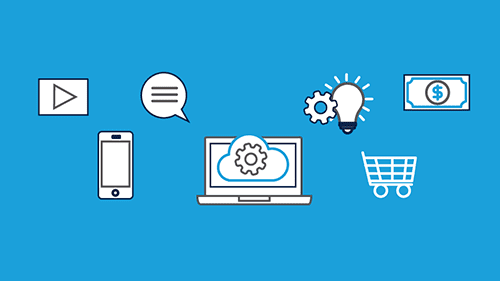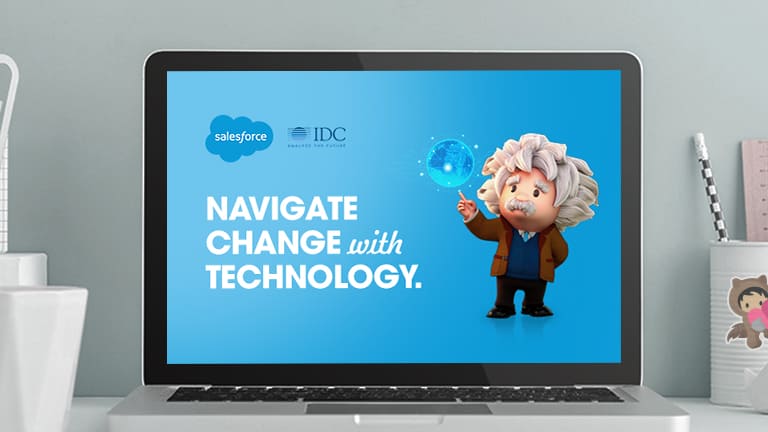
What Is CRM Integration? Complete Guide
What is a CRM integration?
Customer relationship management (CRM) integration connects your CRM system with other software applications to share data and automate tasks. This can improve efficiency, productivity, and customer satisfaction. Some common examples of CRM integrations include connecting your CRM software to your email marketing platform, accounting software, or e-commerce platform.
When these systems are integrated, you can automatically update customer information, do custom integration, track sales, and manage leads from within your CRM. This can save you time and effort, and help you provide better customer service. For example, if a customer orders on your e-commerce platform, their information can be automatically added to your CRM. This information can then be used to send them a personalised email marketing campaign or to track their order status.
CRM integration can also help you to improve your sales process. By integrating your CRM with your accounting software, you can track sales and revenue, and identify trends. This information can then be used to make better choices regarding your sales strategy. Additionally, CRM integration can help you to improve your customer service. By integrating your CRM with your customer support software, you can track customer interactions and resolve issues more quickly. This can lead to happier customers and increased customer loyalty.
Benefits of CRM integration
Centralised customer information is one of the main benefits of CRM integration. When all of your customer data is stored in one place, it is easier to access and manage. This can improve customer service, as you can quickly find the information you need to help customers with their inquiries. It can also help you identify trends and patterns in customer behaviour, which can be used to improve your marketing and sales strategies.
Improved customer service is another key benefit of CRM integration. When you have a centralised view of customer data, you can provide more personalised and efficient service. For example, you can see a customer's past purchase history and interactions with your company, which can help you tailor your recommendations and offers. You can also track the status of customer requests and complaints, and ensure that they are resolved quickly and efficiently.
Streamlined sales processes are another benefit of CRM integration. When your CRM is integrated with your other sales tools, you can automate many of the tasks associated with the sales process. This can free up your sales team to focus on selling, and can also improve the accuracy and efficiency of your sales process. For example, you can automatically generate quotes and proposals, track leads, and manage customer accounts.
Enhanced marketing campaigns are another benefit of CRM integration. When you have a centralised view of customer data, you can create more targeted and effective marketing campaigns. For example, you can segment your customers and personalise marketing efforts based on their demographics, interests, and past purchase history. You can also track the results of your marketing campaigns and make adjustments as needed.
The Power of CRM Integration in Business Growth and Efficiency
CRM integration is an essential strategy in optimising business processes, enhancing customer relationships, and driving efficiency across operations. By seamlessly connecting CRM systems with a myriad of software tools and platforms, businesses can unlock the full potential of their customer data, ensuring a more personalised customer experience and streamlined workflows.
- Automate Repetitive Tasks: CRM integrations enable the automation of repetitive tasks, such as updating customer information and sending targeted emails, freeing up sales reps to focus on more strategic activities that drive future sales.
- Centralised Data Management: Integrating CRM platforms with other business tools, from e-commerce software to marketing automation systems, eliminates data silos, ensuring all relevant data is shared and accessible in a centralised location. This integrated data approach enhances the accuracy of customer data and empowers teams with valuable insights into customer behaviour and potential marketing strategies.
- Enhanced Customer Engagement: By leveraging API integration and connecting CRM to social media platforms and e-commerce systems, businesses can personalise marketing efforts more effectively and engage with potential customers across multiple channels. This not only improves the customer journey but also boosts lead generation and customer retention.
- Streamlined Access and Collaboration: Integrated CRM systems offer flexible access controls, allowing for real-time collaboration among team members regardless of their location. Through roles and permissions, businesses can ensure that sensitive customer information is handled securely, maintaining customer trust.
- Integration Examples and Tools: From CRM email integration to connecting CRM with enterprise resource planning (ERP) systems through pre-built integrations or custom code, businesses can tailor their CRM ecosystem to meet specific needs. Integration platforms and third-party apps facilitate the seamless exchange of data between CRM systems and other software, enhancing team communication and operational efficiency.
- Advanced Analytics and Machine Learning: Integrated CRM solutions, enriched with machine learning algorithms, provide businesses with the ability to predict future customer trends and behaviours. This not only helps in refining marketing efforts but also in making informed decisions that contribute to long-term business success.
For small businesses aiming to streamline their operations, enhance customer engagement, and drive growth, CRM integration is essential. By breaking down data barriers and automating key tasks, integrated CRM systems empower businesses to stay up to date, ensuring that every customer interaction is informed and every marketing effort is precisely targeted. Through this holistic approach, businesses can harness the full power of their CRM investments, translating into improved customer satisfaction and increased profitability.
Challenges of CRM integration
The process of integrating a CRM system with other various software tools and applications, while generally beneficial, does come with its own set of challenges that businesses should be aware of before undertaking such an endeavour. A significant hurdle is the potential lack of technical expertise or resources within the organisation. Integrating different systems requires a certain level of technical proficiency, and if the business lacks the necessary in-house expertise, it may need to invest in hiring additional staff or outsourcing the integration process.
Another challenge that arises is ensuring data security and compliance. Integrating systems involves sharing sensitive customer information, making it crucial to implement robust security measures to safeguard this data. Failure to do so could result in data breaches or non-compliance with industry regulations, leading to reputational damage and potential legal consequences.
Incompatibility between systems is another obstacle that can hinder successful integrated CRM systems. Different software applications may use varying data formats, structures, and protocols, making it challenging to establish seamless communication and data exchange. This incompatibility can result in integration errors, data loss, or incomplete data synchronisation.
Managing and maintaining integrations with other systems can also be a complex task. As systems evolve and update, the pre-built integrations between them may require ongoing maintenance to ensure they continue to function properly. This can be time-consuming and requires dedicated resources to monitor and troubleshoot any issues that arise.
Lastly, resistance to change from employees can also impede the success of CRM integration. Employees may be reluctant to adopt new processes or technologies, especially if they are unfamiliar with them. Overcoming this resistance requires effective change management strategies, including clear team communication, training, and support to help employees adapt to the new integrated system.
How to add CRM integrations
Integrating CRM (Customer Relationship Management) systems with other software applications can significantly enhance your business operations and customer service capabilities. However up to date only, successful implementation relies on making informed choices and following a structured process.
The first step is selecting the right CRM integration tool. Evaluate various social media integration tools based on their ease of use, compatibility with your existing IT infrastructure, security measures, and support options. Consider factors such as cost, scalability, and flexibility to ensure the tool meets your current and future needs.
Once you have chosen the integration tool, meticulously map your data fields. This involves matching the data fields in your CRM system with the corresponding fields in the other software applications. Precision in data mapping is essential to ensure seamless data flow and prevent errors. Diligently review and test the data mapping to eliminate any discrepancies.
After mapping the relevant data fields, conduct thorough testing of the integration. Create all-encompassing test scenarios covering various use cases and data types. Validate that data transfers accurately and that all automated tasks execute correctly. Testing the integration before deployment minimises disruptions to your business operations and allows for early identification and resolution of issues.
Empower your team with the knowledge and skills to effectively utilise the integration. Provide clear instructions, comprehensive documentation, and training sessions. Ensure your team members understand the integration platform's capabilities and can leverage it to enhance productivity and customer service. A well-trained team maximises the benefits of the integration and contributes to the success of your business.
Finally, regular monitoring of the integration is crucial to ensure its ongoing functionality. Establish a robust monitoring mechanism that tracks performance, identifies errors or issues, and promptly alerts you to potential problems. Proactive monitoring allows for swift resolution of challenges, maintaining the accuracy of data and the integrity of processes. By diligently monitoring the integration, you can ensure its continued value to your business and its alignment with your goals.
How to integrate CRM into a website
Integrating your CRM with your website or applications through extensions and plugins offers a straightforward yet powerful approach to enhancing your business operations. This seamless integration brings numerous benefits, enabling businesses to more effectively engage with their customers and streamline their sales processes.
- Effortless Customer Capture: By connecting your website directly to the CRM system, capturing customer information becomes an automated process. Visitors entering their details on your website are instantly added to your CRM, ensuring no potential leads slip through the cracks.
- Real-Time Behaviour Tracking: Understanding how visitors interact with your website is crucial for tailoring your marketing and sales strategies. CRM integration allows for the tracking of customer behaviour in real-time, providing valuable insights into their interests and engagement patterns.
- Enhanced Sales Monitoring: With your website and CRM integrated, monitoring sales activities becomes more efficient. You can track conversions directly from your website, giving you a clearer view of how online interactions translate into sales.
This integration not only simplifies the data management process but also empowers your team with actionable insights. By leveraging the capabilities of CRM integration, you can customise your approach to meet customer needs more effectively, leading to improved satisfaction and increased sales.
Common mistakes in CRM integration
In the pursuit of streamlined customer relationship management, businesses often embark on CRM integration endeavours. However, certain pitfalls can hinder the success of these integrations, leading to missed opportunities and wasted resources.
One such pitfall is the absence of a well-defined plan. Without a clear roadmap, businesses risk implementing a disjointed integration that fails to address their unique needs. A thorough assessment of business requirements, processes, and workflows is paramount to ensure a successful integration.
Another critical error lies in neglecting the involvement of key stakeholders. Overlooking the input of departments like sales, marketing, and customer service can result in fragmented data and processes. Each department holds valuable insights and perspectives, and their active participation fosters an extensive integration of access data that caters to the entire organisation's needs.
Insufficient data quality poses another challenge to effective CRM integration. Inaccurate or incomplete customer data compromises the system's ability to provide meaningful insights and personalised experiences. Businesses must prioritise data cleansing and standardisation to ensure the accuracy and consistency of their customer information. This not only enhances the customer experience and satisfaction but also empowers data-driven decision-making.
Overlooking security measures is a grave oversight that jeopardises sensitive customer data. Robust security protocols, encompassing access controls, encryption, and regular audits, are essential to safeguard customer information and comply with industry regulations. Failure to prioritise security can lead to data breaches, eroding customer trust and potentially resulting in legal repercussions.
Finally, neglecting ongoing monitoring and maintenance can lead to integration performance issues and missed opportunities for improvement. Continuous monitoring data management process allows for prompt identification and resolution of errors or inefficiencies. Regular updates and maintenance ensure that the integration remains aligned with evolving business needs and technological advancements.
By addressing these common pitfalls and adopting best practices, businesses can unlock the full potential of CRM integration. A well-planned, stakeholder-inclusive, data-driven, and secure integration empowers businesses to deliver exceptional customer experiences, streamline operations, and drive sustainable growth.
Maximising Business Potential Through CRM Integration
CRM integration has become essential for enhancing customer relationship management by connecting CRM systems with ease, with various other software tools and platforms. This integration not only streamlines business processes but also enriches customer data management, enabling businesses to offer a more personalised customer experience. By integrating CRM solutions with marketing automation tools, e-commerce software, and social media platforms, companies can automate repetitive tasks, efficiently manage customer information, and gain valuable insights into customer behaviour.
For instance, CRM email integration allows sales teams to access data directly from their CRM platform, ensuring that all communications with potential customers are up-to-date and personalised based on the customer's journey. Similarly, social media integration facilitates real-time engagement with customers, enhancing lead-generation efforts and bolstering customer engagement through direct interactions on popular social platforms. API integration with third-party applications, such as enterprise resource planning (ERP) systems or email service providers, ensures that customer data is automatically synced across different systems, eliminating data silos and providing a centralised location for all relevant data.
The benefits of integrated CRM systems extend beyond simply data centralisation; they empower sales reps and marketing teams to personalise marketing efforts more effectively, predict future sales trends with machine learning algorithms, and improve team communication. Pre-built integrations and custom integration options provided by CRM providers, aided by software developers and application programming interfaces (APIs), offer businesses the flexibility to connect their CRM with a wide range of third-party apps and business tools, from lead generation forms to advanced e-commerce platforms.
CRM integration examples underscore how businesses, from small enterprises to large corporations, can leverage integrated data to refine their marketing strategies, enhance customer interactions, and ultimately drive sales. By breaking down the barriers between CRM data and other systems, companies can foster stronger customer relationships, streamline their sales process, and set the stage for sustained business growth in a competitive marketplace.
Best practices for successful CRM integration
Achieving successful CRM integration requires meticulous planning and adherence to proven best practices. Embracing cloud-based integrated CRM and systems is paramount, as they provide unmatched flexibility, accessibility, and scalability. Teams can effortlessly access customer information and collaborate seamlessly from any location, revolutionising overall efficiency.
Compatibility with existing business systems is another marker of successful integration. Opt for a CRM that effortlessly connects with your accounting, marketing automation, and e-commerce platforms. This ensures seamless data flow, eliminating manual data entry and reducing errors.
Precise data mapping is crucial to establish accurate data synchronisation. Meticulously match data fields in your CRM with corresponding fields in integrated systems. This ensures customer information, sales records, and other pertinent data are transferred flawlessly, presenting a wide-ranging view of customer relationships and interactions.
Thorough testing is indispensable before going live. Conduct exhaustive testing to validate data accuracy across integrated data systems. Test scenarios should encompass diverse aspects, including data synchronisation, user permissions, and business processes. By identifying and resolving issues during testing, you lay the foundation for a smooth and successful integration.
Finally, regular monitoring is vital to maintain integration effectiveness. Track key performance indicators (KPIs) such as data synchronisation errors, user adoption rates, and system performance. This vigilance allows for prompt identification and resolution of any emerging issues, ensuring the enduring success of your CRM integration.
CRM Integration with Salesforce
CRM integration with Salesforce can help businesses improve efficiency and productivity by providing a single view of customer data, streamlining processes, and automating tasks.
Salesforce is a cloud-based customer relationship management (CRM) platform that helps businesses manage their relationships with customers, leads, and prospects. Salesforce can be integrated with a variety of other software applications, including ERP systems, marketing automation platforms, and e-commerce platforms.
When CRM and Salesforce are integrated, businesses can share customer data across all departments, providing a comprehensive view of the customer. This can help businesses to better understand their customers' needs and preferences, and to provide them with more personalised and relevant experiences.
CRM integration with Salesforce can help businesses automate tasks such as lead generation, customer service, and sales forecasting. This can free up employees to focus on more strategic tasks and can help businesses to improve their overall efficiency and productivity.
Finally, CRM solutions and integration with Salesforce can help businesses to streamline processes such as order management and customer support. This can help businesses to improve their customer service levels and to reduce costs.
Overall, CRM integration with Salesforce can be a valuable investment for businesses that want to improve their efficiency and productivity. By providing a single view of customer data, automating tasks, and streamlining processes, CRM integration with Salesforce can help businesses to better understand their customers, provide them with more personalised experiences, and improve their overall performance.

Free Trial
What is Salesforce CRM? Try it free and see how it can help you grow your business.
Getting Started with CRM

White Paper
The Impact of Digital Transformation During Times of Change
See how leaders are making shifts in technology during uncertain times.

What does Salesforce do?
Learn how Salesforce helps companies connect to their customers with solutions across sales, marketing, service, and commerce.

Forrester Research
New Study: Discover the Secrets to CRM Success.
Make CRM The Foundation of Your Customer Obsessed Strategy
Questions? We’ll put you on the right path.
Ask about Salesforce products, pricing, implementation, or anything else — our highly trained reps are standing by, ready to help.

